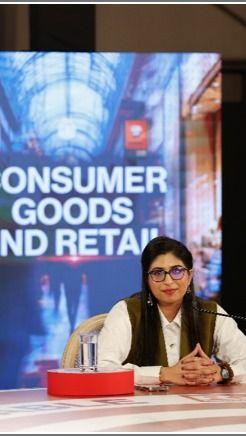
Editorial: We Need To Be Cautious On Economy
Multiple factors impact the mood of the electorate but one constant in almost all polls is the prevailing consumer price inflation.
Particularly the price of vegetables, especially onions and tomatoes.
For the common consumer the broader state of economy matters little if his daily essential needs begin to pinch his pocket.
Take the recent poll in America.
By all accounts, the US economy is doing very well, growing at over 2% annually.
This is remarkable for the world’s biggest economy.
Indeed, job growth in the Biden years has been excellent.
Yet, one major reason, along with immigration — their Bangladeshis — invariably cited for the defeat of Democratic presidential candidate, Kamala Harris, is the consumer inflation.
Prices of milk, bread and other daily food items have ruled inordinately high in recent months.
In short, when voters get stressed about daily expenses, compromising on one or the other food item to make ends meet, they register protest against the ruling dispensation.
Therefore, the incumbent coalitions in Jharkhand and Maharashtra need to be wary of the consumer resistance while seeking re-election, given that the price of veggies, especially onions and tomatoes , is hurting voters.
In certain places onions are selling at Rs 80 per kilogram.
Prices have doubled with the onset of monsoon.
Though it is a recurring annual phenomenon for vegetable prices to become costlier in the monsoon period, there is often a mismatch in demand and supply of onions, with regional Maharashtra politics intruding into the straightforward equation.
Well aware of the onion effect on voters, the central agriculture produce marketing agencies have sought to ease the onion situation through a nation-wide network of fair price shops.
Yet, this hasn’t had a salutary effect on onion prices sold by private vendors.
Hopefully, there will be a respite soon from high vegetable prices once the fresh crops enter the market.
For the record, vegetable inflation in September and October months rose 36% and 42% respectively.
According to National Statistical Organisation, consumer inflation rose to 6.
2% in October as against 5.
5% in the previous month.
The October inflation was the highest in 14 months.
Given that the Monetary Policy Committee of the Reserve Bank of India has a specific remit to ensure that consumer inflation rules within the 4% to 6% range, with latest October month figures breaching limit, it is unlikely that the MPC will contemplate easing the prime lending rate anytime soon.
This may shatter the hopes of equity markets for a domestic fillip now that the foreign investors are pulling out billions, but on sober reflection even at the lower ends of Sensex it rules far above anything it has done before.
Consumer interests ought to remain foremost for policy-makers.
Indeed, the newly-constituted MPC in its first meeting in October had implied a rate cut in its next meeting due in December.
It said that it had switched its stance from the hitherto “accommodative” to “neutral”, causing the share market bulls to espy a PLR cut in the next meeting of the MPC in December.
The breach of the 6% cap for consumer inflation in October seems to have virtually pushed back further the time-line for basic rate reduction by the central bank.
Indeed, the MPC may have to revise its sums, considering that it had projected 4.
8% consumer inflation in the third quarter and 4.
2% in the next.
Meanwhile, the debate whether MPC charter be unshackled from the rather restrictive consumer inflation control, which undoubtedly is impacted by several factors other than money supply, and linked to broader growth concerns can now be set aside for the foreseeable future.
No party can risk popular wrath, leaving consumer inflation unchecked.
.
Related Articles
business
PSB’s Record 26% Profit Growth in First Half FY25
November 12, 2024

New Delhi: The finance ministry on Tuesday said that public sector banks (PSBs) have shown robust performance in the first half of the current fiscal year with a 26 per cent growth in net profit, increase in business and decline in non-performing assets (NPAs).
Besides, the aggregate business of 12 PSBs, including top government banks such as State Bank of India and Punjab National Bank, stood at Rs 236.
read morebusiness
Eveready Industries consolidated profit jumps 16% for Q2FY25
November 12, 2024

Dry cell battery major Eveready Industries on Tuesday reported around 16 per cent year-on-year increase in its consolidated net profit to ₹29.
56 crore for the second quarter this fiscal from ₹25.
read morebusiness
Bawna Pagaria, Co-Founder & CEO of Indiazona, On Empowerment of Small Businesses
November 12, 2024

India Economic Summit: Bawna Pagaria, Co-Founder and CEO of Indiazona, speaking at the India Economic Summit (IES) 2024, shared her entrepreneurial journey and insights on empowering small and medium businesses (SMBs) in India.
During her address, Pagaria highlighted the critical challenges facing Indian SMBs and the role of Indiazona in bridging these gaps to foster growth and innovation.
read more